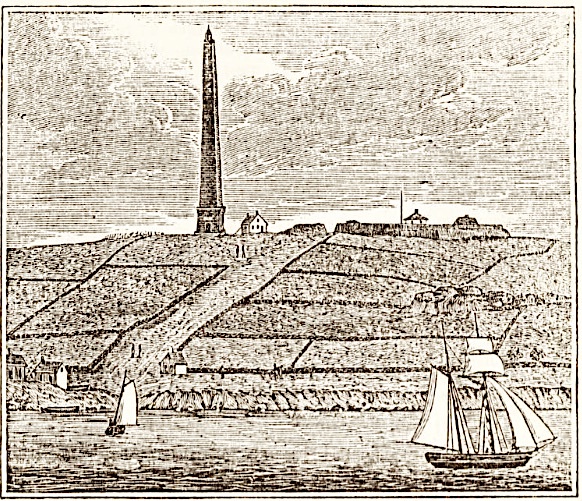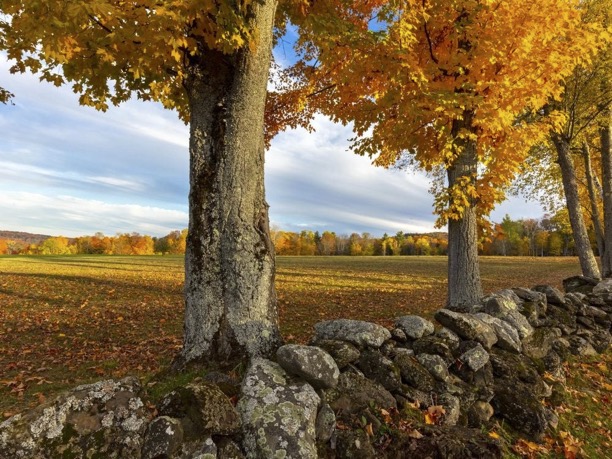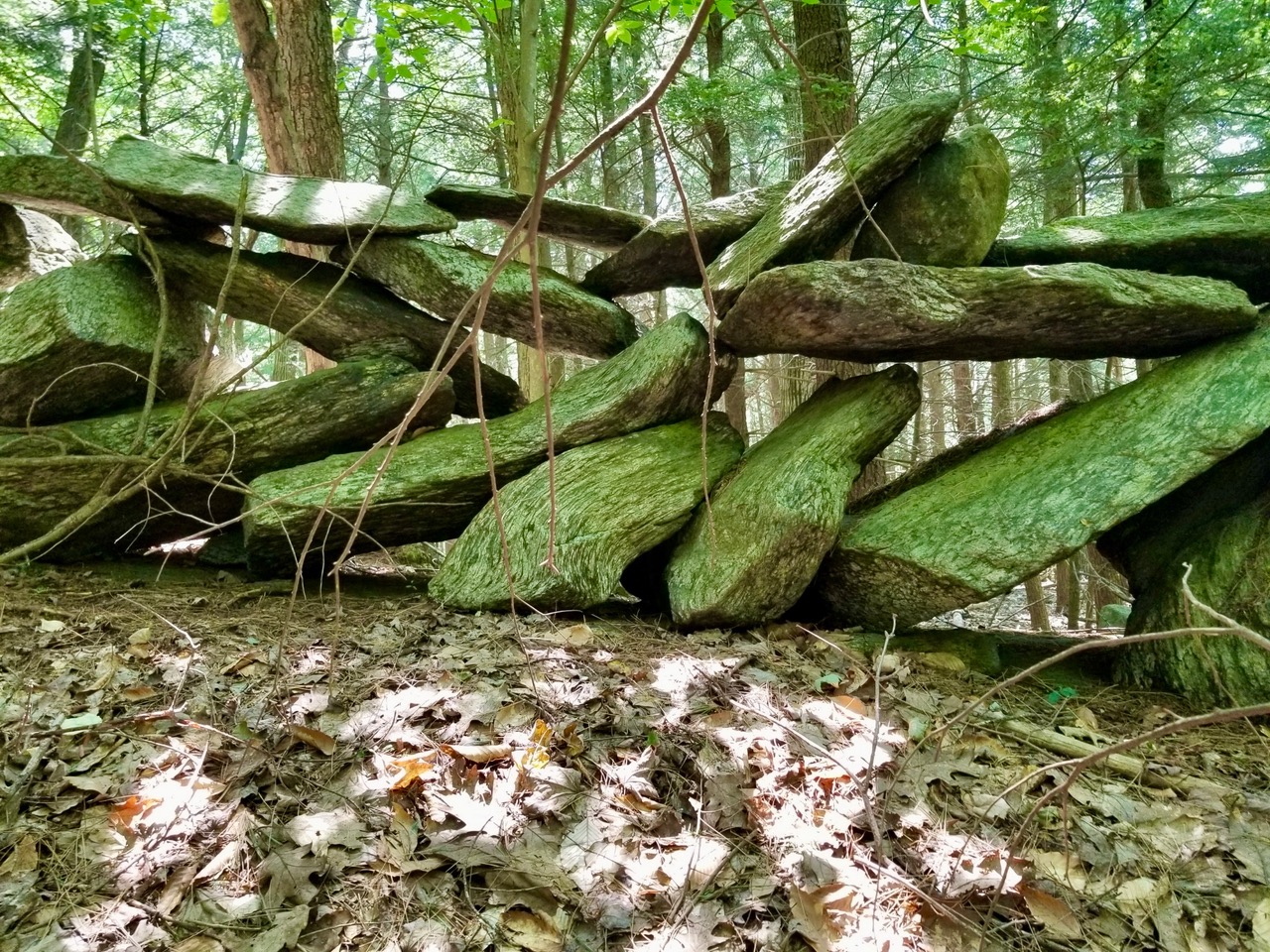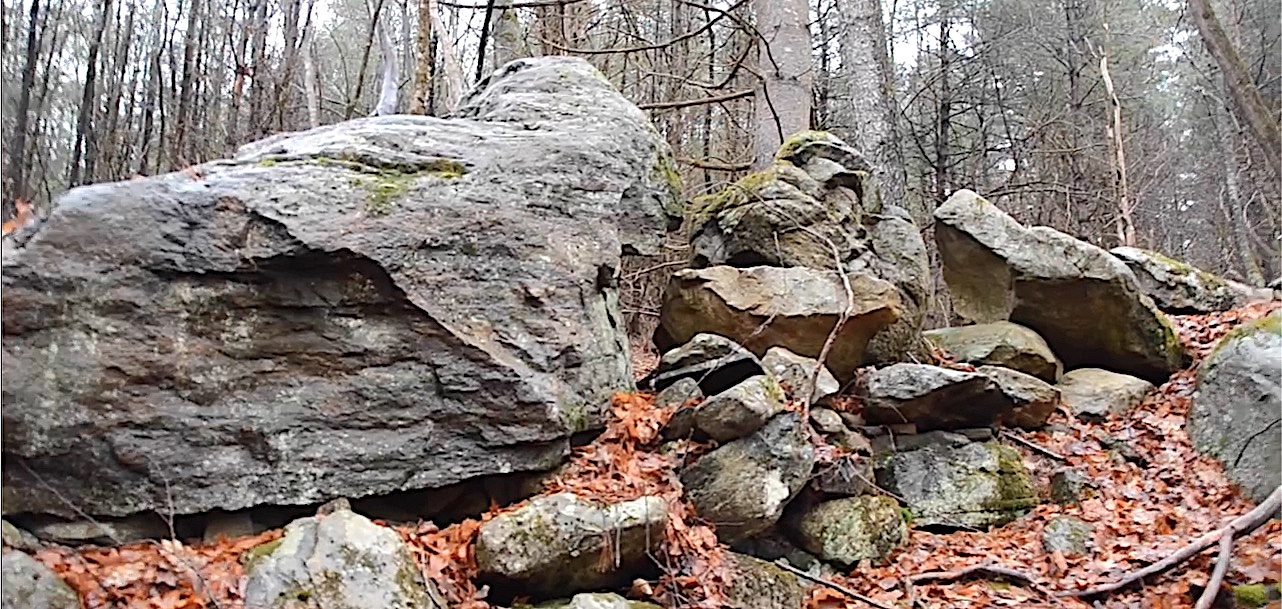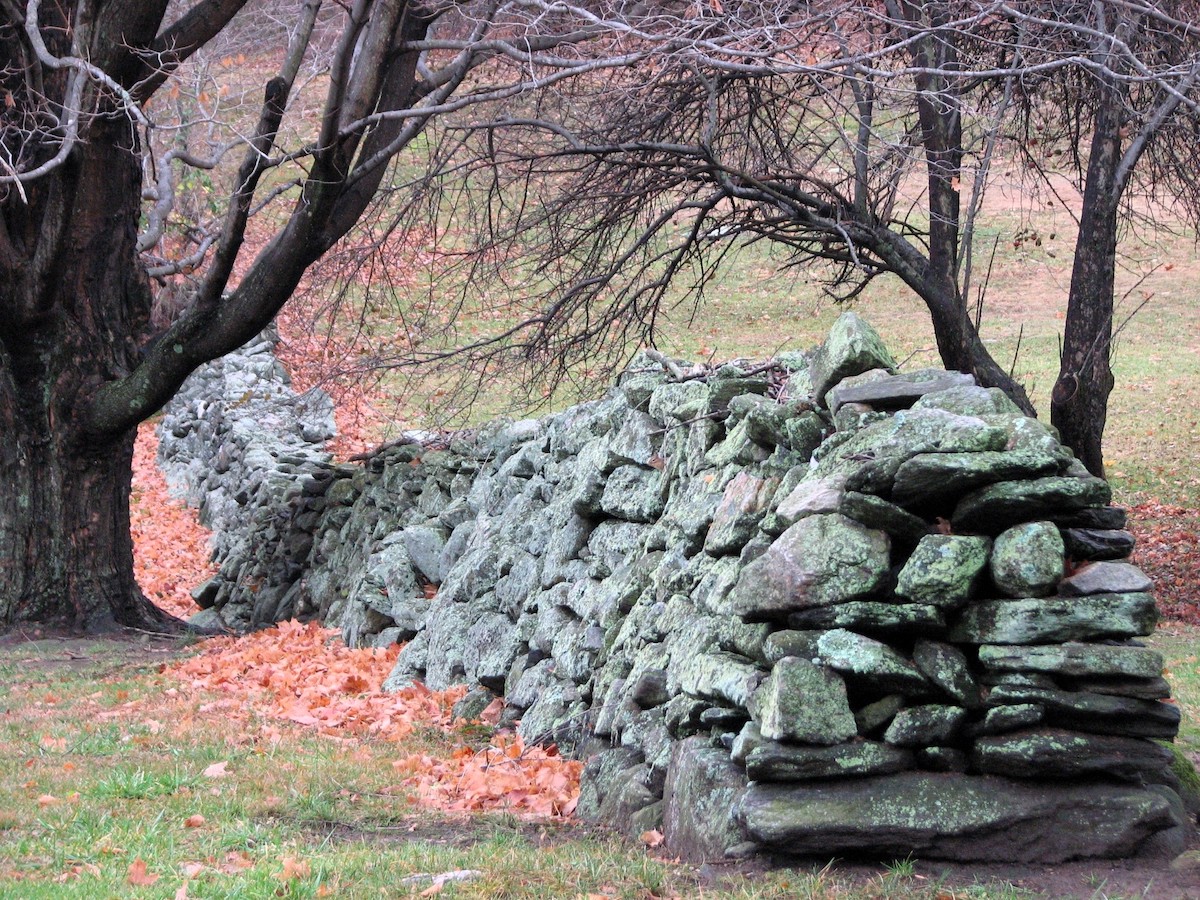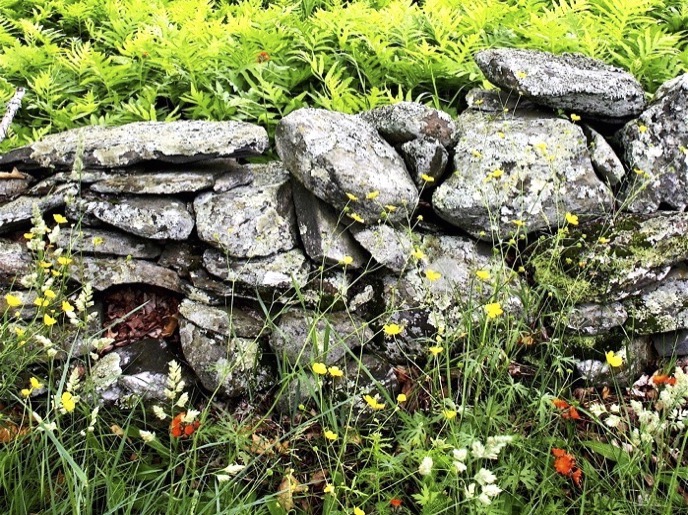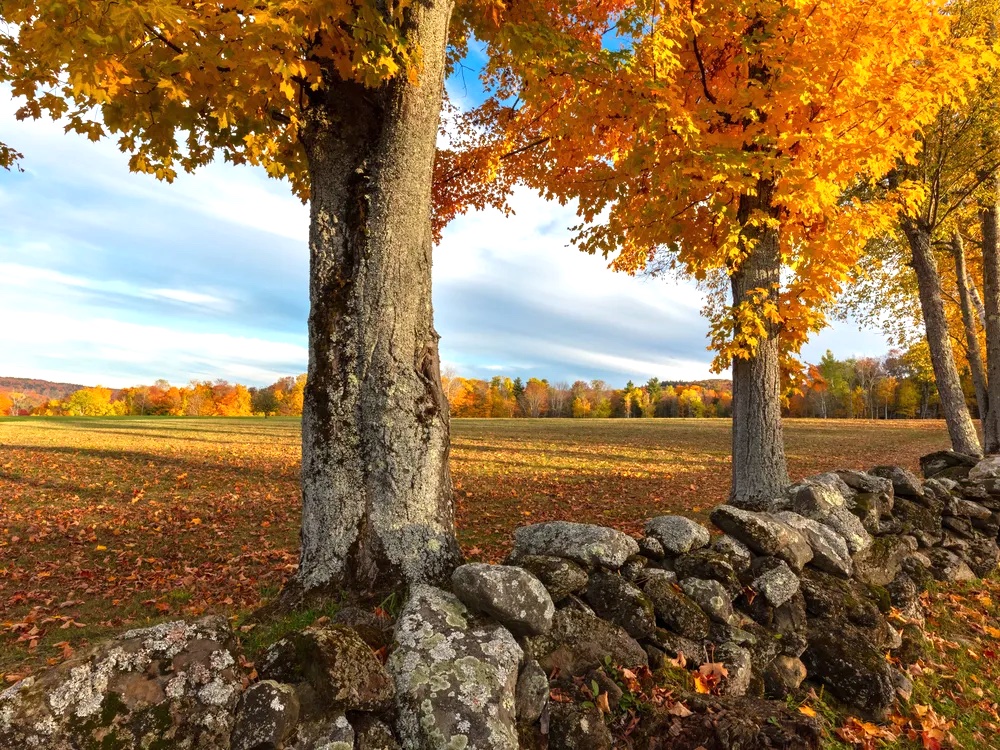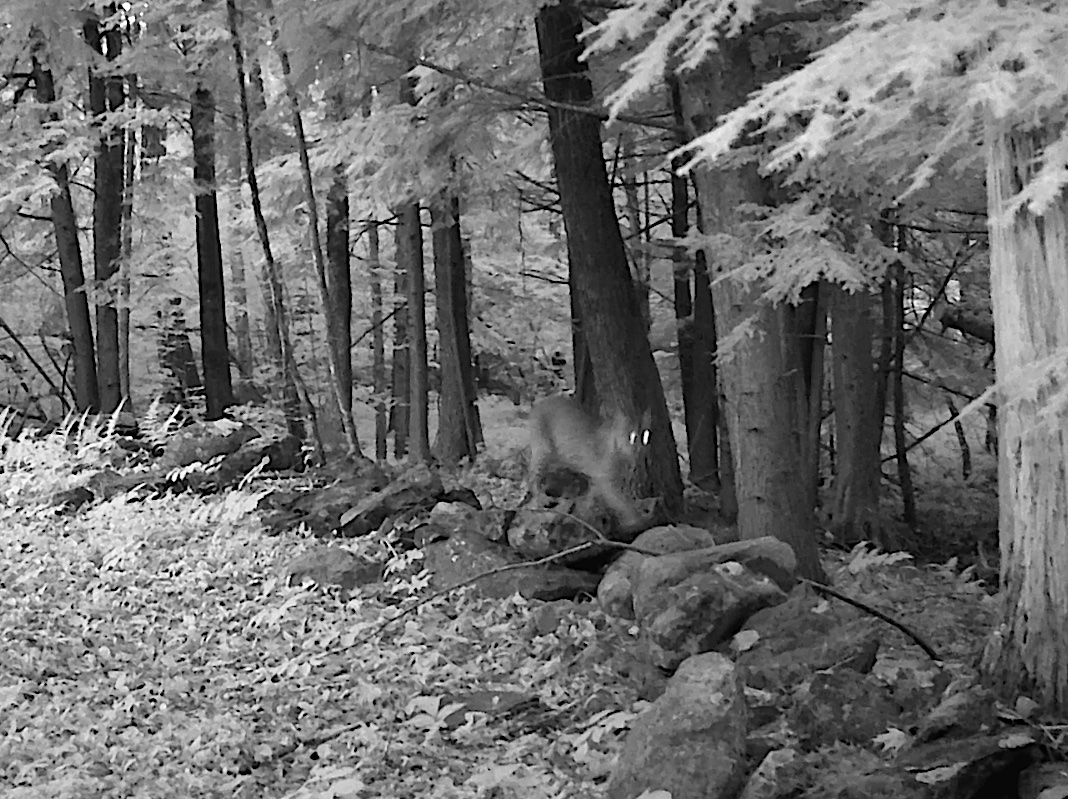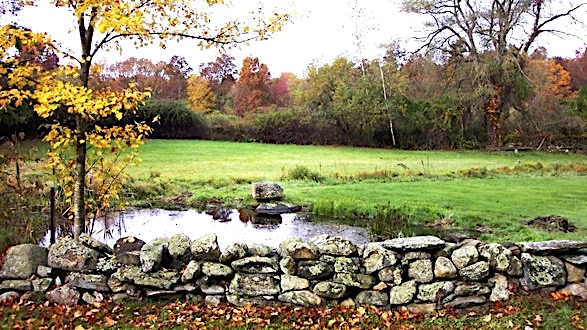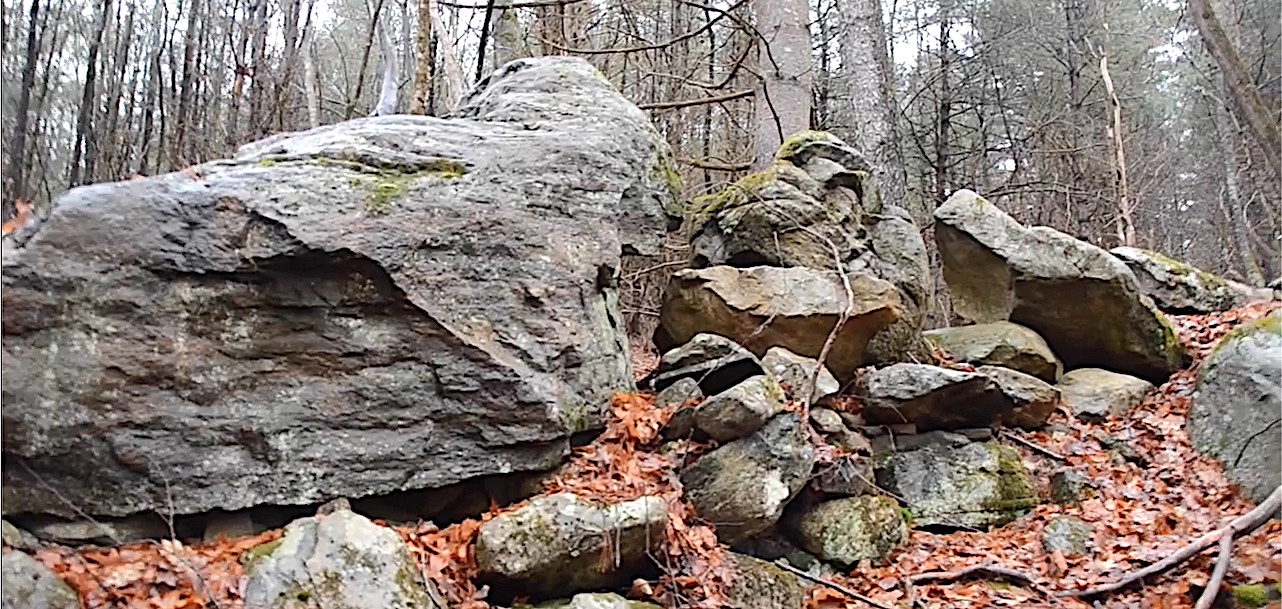
Screenshot of 44-second video by Sam Wadsworth from late December, 2023. It shows oversized stones pushed and set on a wall in Monterey, Massachusetts. This large, glacially milled boulder rests above a classic mix of sharp-edged (slabs) and round-edged slabs (pillows). The diagonal line from upper left to lower right is a recent and sharply broken edge, with the upper side having a rounded (milled) surface with a moss-lichen-patina and the lower side having jagged fresh rock on which may be vertical scrape marks running against the grain (metamorphic foliation). Because the boulder rests on stones that are continuous across the gap in the wall, I interpret that the boulder was moved, broken, and scraped in the recent past by a large machine fueled by petroleum.
During the dark days of December a curious character from Monterey, Massachusetts named Sam Wadsworth contacted me from the heart of the Berkshires. Having read my book Stone by Stone, he reached out to ask me two two excellent questions that I decided to answer in this post as a surprise, rather than an email. He asks: What is “the maximum size/weight of boulder that could be moved by man and oxen”? He also asks: Did the farmers who cleared the land “arrange stone walls to include such giant stones or did they move them”?
Though both questions are straightforward, neither has a good answer that I know of.
The second question is easier, so I’ll take it on first. It concerns enormous boulders ranging in size from kitchen tables to snow-plow trucks that have a wall of smaller stones heading outward in various directions. The wall extensions are usually straight, especially if the walls are massive, but lower, less massive walls are usually more irregular, occasionally sinusoidal at the scale of yards. I have also seen straight, well-built walls cut right across and incorporate large, apparently un-moved stones that must have lain directly in the way of the line.
Such enormous stones were were almost certainly never moved because it would take a huge amount of unnecessary effort and ingenuity to move them, because they do not exhibit the breakage, scraping, or crushing marks that would be expected by movement, and because boulders enveloped by walls are crossed at random positions. Had the been moved, the stones would have been turned into alignment. The default hypothesis is all such large stones, with or without wall attachments, are in situ glacial erratics that have never been moved. In my four-part particle size nomenclature, they are residual stones that were left in place, rather than moved: (1) with some sort of assistance (assisted, meaning livestock, machines, levers, ramps, etc), (2) hefted with human hands (manually moved by one or two people), or; (3) handled with one hand (one-hander).
The combination of large residual stones attached to segments of walls gives rise to the appearance of tadpoles or bolts with the large head being the boulder and the long part being the segment of wall with smaller stones. Within the CSL (Ceremonial Stone Landscape) community, some of these features are interpreted as serpent effigies with boulders for heads and walls for bodies, especially if the bodies are sinusoidal. Some may indeed be just that. But, then again, they might not be.
Sam’s first question of how large a stone can be moved by a man and oxen is probably unanswerable because it’s only a matter of determination, ingenuity, and the number of oxen added to the team. The Greek mathematician Archimedes (287-212 BCE) one wrote: “Give me a lever long enough and a fulcrum on which to place it, and I shall move the world.” Anecdotally, I don’t think I’ve seen an oxen-moved stone in a wall larger than 3 feet square, or about a ton in weight. Larger ones occur in cut-stone project like bridges and monuments.
With the question about residual boulders out of the way, and the one about maximum size unresolved, I asked Sam: “Why not have another look for clues to the timing and character of movement? And, while you’re at it, measure the largest stones you know that were moved.”
He did just that, converting his curiosity into a holiday outing for his two daughters and a 60-pond dog. By January 2, 2024, he had sent me a full report by email. He found no obvious marks on the stones that might have been clues. Of the five large boulders he measured from the wall, the largest had a circumference of 26 feet. Assuming a spherical shape and “using standard formulae for arriving at volumes and a Google value of 175 pounds per cubic foot for granite,” the largest boulder would have weighed 52,000 pounds or about 25 tons. [A 26 foot circumference yields a radius of 4.1 feet, which yields a volume of 296.6 cubic feet, which yields a weight of 51,914 pounds.] This, boulder is the broken one that ends his video below, and which I share with his permission. My calculated weight is easily within the range of the what a large bulldozer can push, especially if the object is round enough to roll.
But when was it moved? Based on the limited lichen cover of some of the displaced stone, I suggest less than a century. Sam confirmed this by measuring the diameter of a sample of ten trees in the area from which the stones were moved. Using standard guess-timates, the forest was only about 50 years old.
In conclusion, I interpret that his walls are petroleum walls. This is the term I’ve used for years to describe hybrid walls that are common throughout New England. Those with oversized boulders either pushed in a row against an older wall or set on top of an older wall. This makes sense given the local land use history. A time of farming limited to livestock power creates the original wall. And a subsequent time of forestry associated with big yellow machines capable of moving enormous stones, and caring less about how the walls end up looking.
Sam got his answer the hard way: by scratching his head, doing his homework, asking for ideas, sending his report to me, and editing the results. The good news is that his hard way was also the fun way. The getting out there to explore history by being a stone wall detective. And the corresponding back and forth about a mutual joy.
Below is my commentary on the 44 second video by Sam Wadsworth. The terminology follows my book Exploring Stone Walls (NYC: Bloomsbury, 2005) and, more recently, Taxonomy and Nomenclature of the Stone Domain in New England. The digital time is in minutes and seconds.
0.01 The boulder in the foreground is adjacent to the pre-existing wall, possibly (but not likely) having rolled off it. It also has a sharply broken edge. The rounded boulder in the background rests atop a massive tablet, which, in turn, rests above the lower wall. The sequence is clear: wall, then tablet, then rounded boulder.
0:10-0.19 The view with the dog initially to the left shows the pre-existing wall quite clearly as a tier of assisted sized stones, surmounted by a tier of hefted- and one-hander-sized stones placed above them and tucked into void spaces. This appears to be a normal single wall in my taxonomy.
Within this segment, at 0.15, is an spur, or out-dent of the wall consisting of a few stones directly below the large tablet. Circumstantially, it appears that these were knocked down when the tablet, or the superimposed heavier boulder, were put in place. The freshness of the joint face on the central stone in the spur suggests it was recently displaced.
0.25 The large boulder seems to rest on crushed rock residue different from the built wall on either side. This is a mystery because simply placing the boulder would not crush the stone like this. Where did the crushed rock come from?
0.30 We’re back to the original wall, a single-tiered segment, likely a normal double wall, built with care, with a laid degree of order,and with visible courses, the largest stones being at the top.
0.35 Four large stones, two slabs and two massive boulders are placed on and over the wall, suggesting it’s built to clear stone from the near side.
0.44 The largest stone is clearly placed in a gap on a built wall, with the flat side down. Other large stones are placed on and slightly over the wall, indicating construction, likely by a front-end loader, from the near side.
